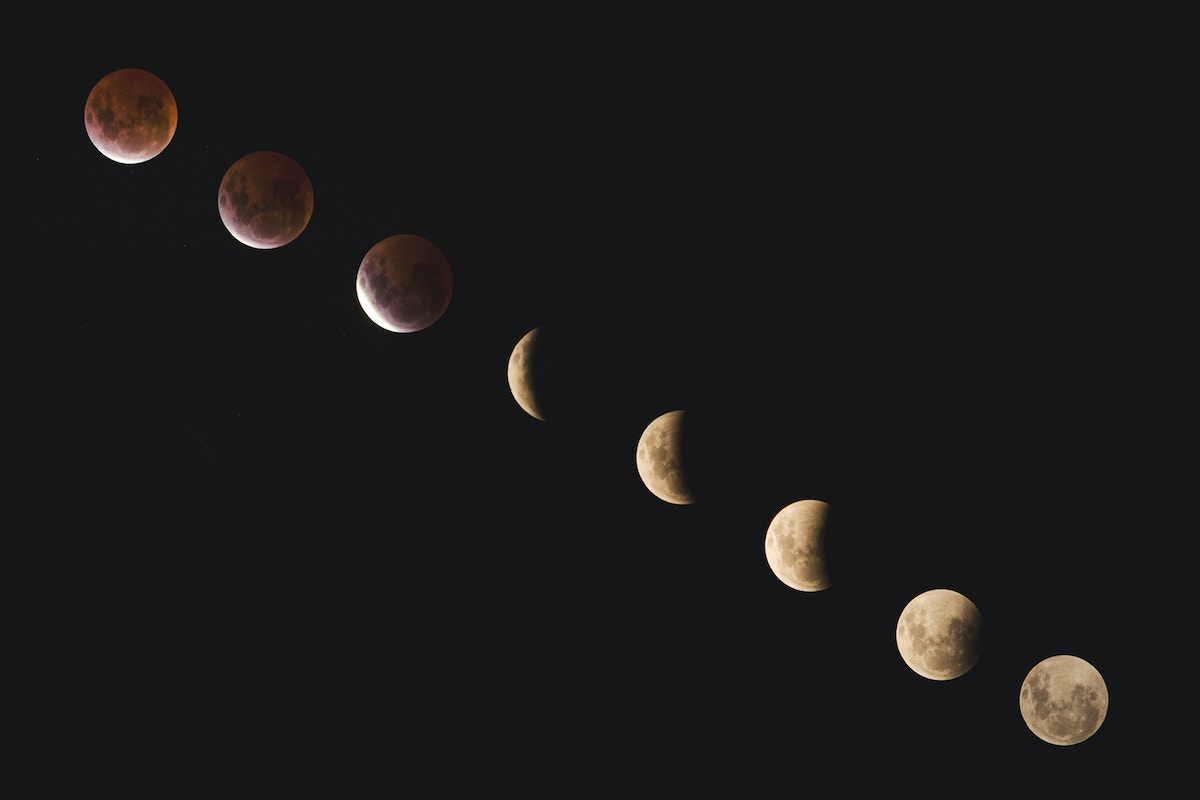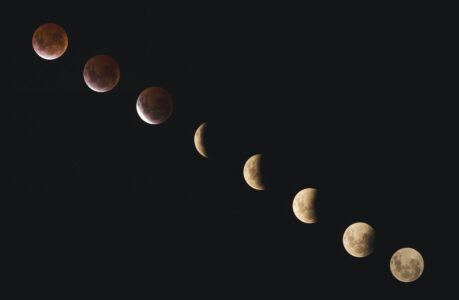Introduction
Since the beginning of time, humans have been fascinated by the moon. Its luminous glow has inspired poets, artists, and mystics alike, and its influence on the tides and the natural world has been well documented by scientists. But beyond its physical impact, the moon also holds great spiritual significance, particularly in the realm of lunar phases.
In this chapter, we will explore the different phases of the moon and their spiritual significance, as well as provide practical tips for harnessing the power of lunar cycles to manifest your desires, cultivate your intuition, and live in harmony with the natural rhythms of the universe.
The Phases of the Moon
The moon’s phases are determined by its orbit around the Earth, which takes approximately 29.5 days to complete. As the moon orbits the Earth, its position relative to the sun changes, causing different portions of its surface to be illuminated by sunlight.
The lunar cycle begins with the new moon, which occurs when the moon is positioned between the Earth and the sun, with its dark side facing Earth. The new moon marks the start of a new lunar cycle, and is traditionally associated with new beginnings, fresh starts, and setting intentions.
As the moon moves away from the sun, it begins to wax, or grow brighter, until it reaches the first quarter phase, which occurs approximately one week after the new moon. At this point, half of the moon’s surface is illuminated, and the moon is said to be in a phase of growth and expansion.
The waxing phase continues until the moon reaches the full moon phase, which occurs approximately two weeks after the new moon. During the full moon, the entire face of the moon is illuminated, and its energy is said to be at its peak. The full moon is traditionally associated with abundance, fruition, and manifestation.
After the full moon, the moon begins to wane, or grow darker, until it reaches the third quarter phase, which occurs approximately three weeks after the new moon. At this point, half of the moon’s surface is once again illuminated, and the moon is said to be in a phase of release and letting go.
The waning phase continues until the moon reaches the new moon phase once again, marking the completion of one lunar cycle and the beginning of another.
The Spiritual Significance of Lunar Phases
Each phase of the moon holds unique spiritual significance, and can be harnessed to manifest different desires and cultivate different aspects of the self.
The new moon, for example, is a powerful time for setting intentions, planting seeds, and beginning new projects. It is a time to turn inward, reflect on what you want to create in your life, and set clear and specific goals for the lunar cycle ahead.
The waxing phase that follows is a time for taking action, moving forward with confidence, and trusting in the unfolding of your intentions. This is a time to focus on growth, expansion, and abundance, and to take practical steps towards realizing your goals.
The full moon is perhaps the most powerful and transformative phase of the lunar cycle. It is a time of heightened energy, when the veils between the spiritual and physical worlds are said to be at their thinnest. The full moon is a time for manifestation, celebration, and gratitude, and is a powerful opportunity to release any blocks or limitations that may be holding you back from your highest potential.
The waning phase that follows is a time for reflection, letting go, and releasing anything that no longer serves your highest good.
What causes the lunar phases
The lunar phases are caused by the changing position of the moon relative to the sun and the Earth. As the moon orbits the Earth, it also moves in its own orbit around the sun. As it does so, the amount of sunlight that falls on the moon’s surface changes, causing it to appear to wax and wane.
During the new moon phase, the moon is positioned between the Earth and the sun, with its dark side facing Earth. Because the side of the moon facing Earth is not receiving any sunlight, it appears completely dark and invisible to the naked eye.
As the moon moves away from the sun, its illuminated side begins to face Earth, causing it to appear to wax or grow brighter. This phase is known as the waxing phase and continues until the moon reaches the first quarter phase, where half of the moon’s surface is illuminated.
The waxing phase continues until the moon reaches the full moon phase, where the entire face of the moon is illuminated by the sun. This occurs when the moon is on the opposite side of the Earth from the sun.
After the full moon, the moon begins to wane, or grow darker, as it moves away from the Earth and its illuminated side becomes less visible. This phase continues until the third quarter phase, where half of the moon’s surface is once again illuminated.
The waning phase continues until the moon reaches the new moon phase again, completing one lunar cycle and beginning another. This cycle repeats approximately every 29.5 days.
How the lunar phases affect astronomers
The lunar phases have a significant impact on astronomers, particularly those who study the night sky using telescopes and other instruments. Here are a few ways in which lunar phases affect astronomers:
- Visibility: The amount of light reflected by the moon can significantly impact the visibility of celestial objects. During a full moon, the sky can be up to 100,000 times brighter than during a new moon, making it more difficult to see faint objects such as galaxies and nebulae. For this reason, many astronomers schedule their observations during the days leading up to a new moon, when the sky is darkest.
- Contrast: The brightness of the moon can also impact the contrast of astronomical objects. During a full moon, the sky is so bright that it can make it difficult to distinguish details in faint objects. However, during a new moon, the contrast between bright stars and faint objects is more pronounced, making it easier to study the details of distant galaxies and other celestial objects.
- Observing time: Lunar phases can also impact the amount of time that astronomers have for observations. Because the moon rises and sets at different times each night, it can sometimes interfere with observations of certain parts of the sky. During a full moon, for example, the moon is visible for the entire night, leaving fewer hours of darkness for observations.
- Tides: The moon’s gravitational pull also affects the tides on Earth. This can impact the stability of telescopes and other instruments that are located near bodies of water. In addition, some astronomical phenomena, such as eclipses, are closely tied to the lunar cycle and require precise calculations to predict their occurrence.
Overall, the lunar phases play an important role in the work of astronomers, influencing when and how they conduct their observations and providing a fascinating subject of study in their own right.

